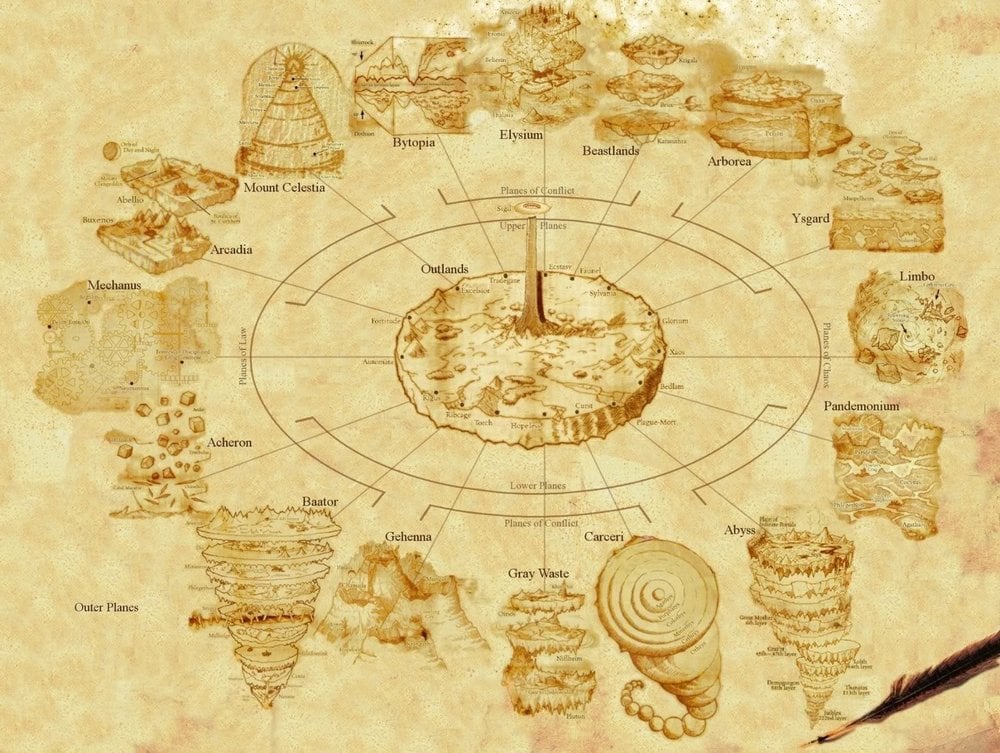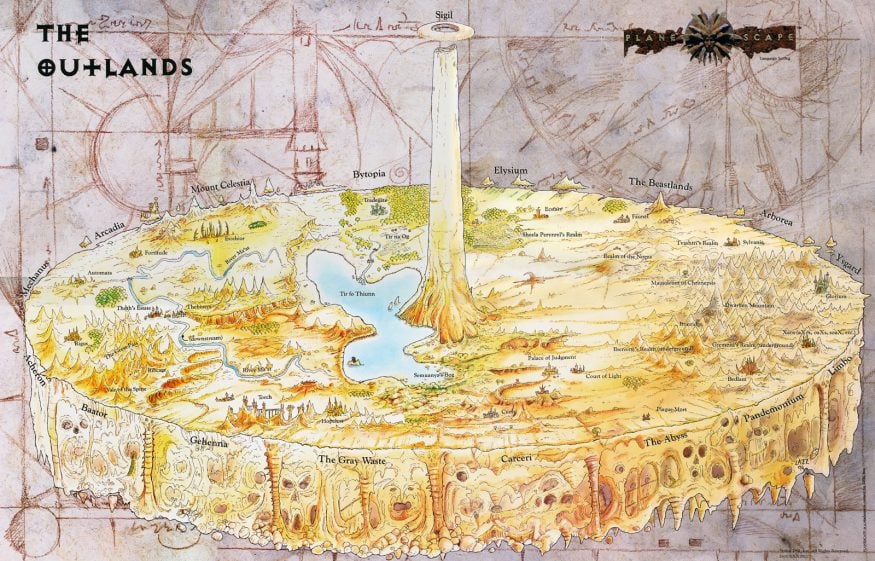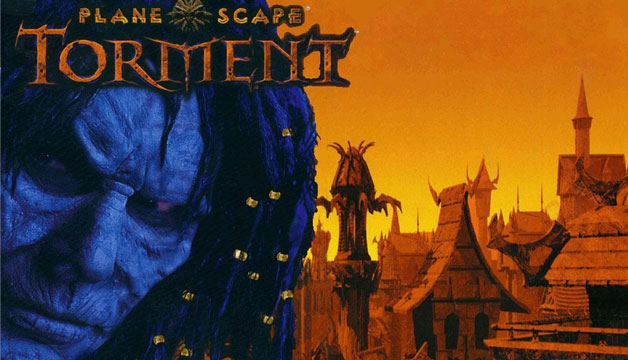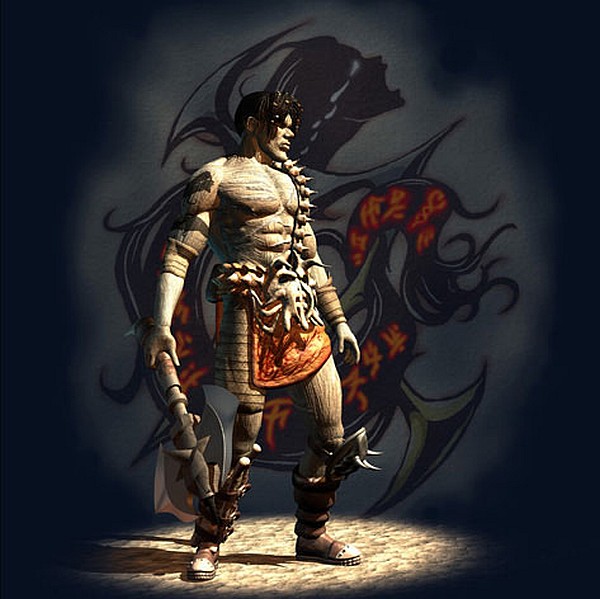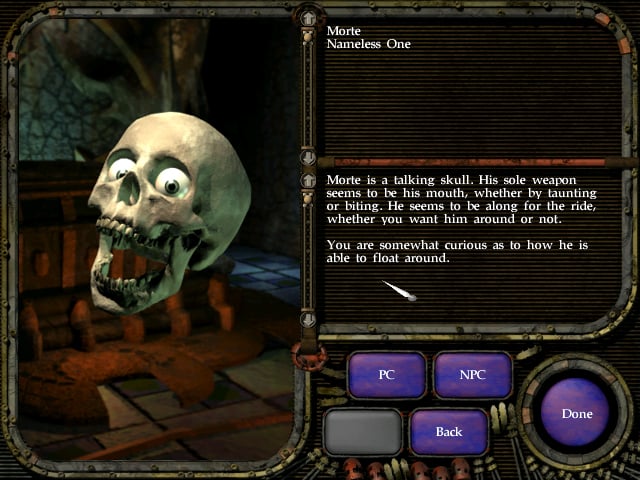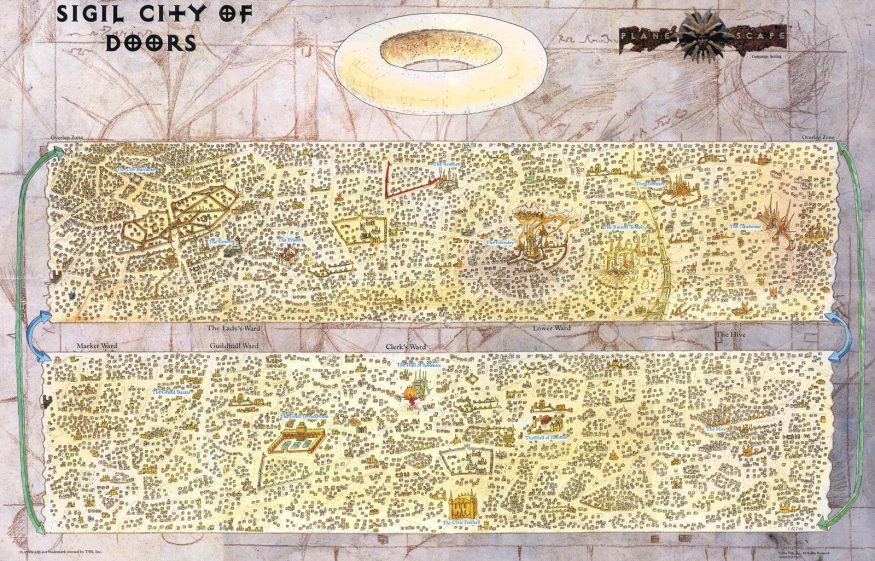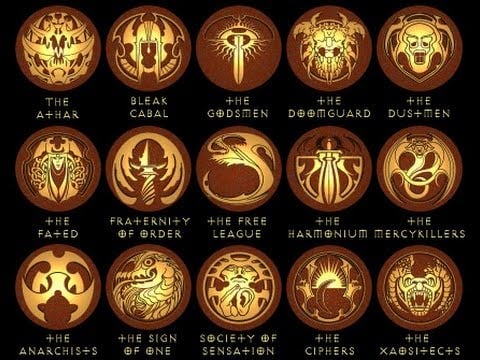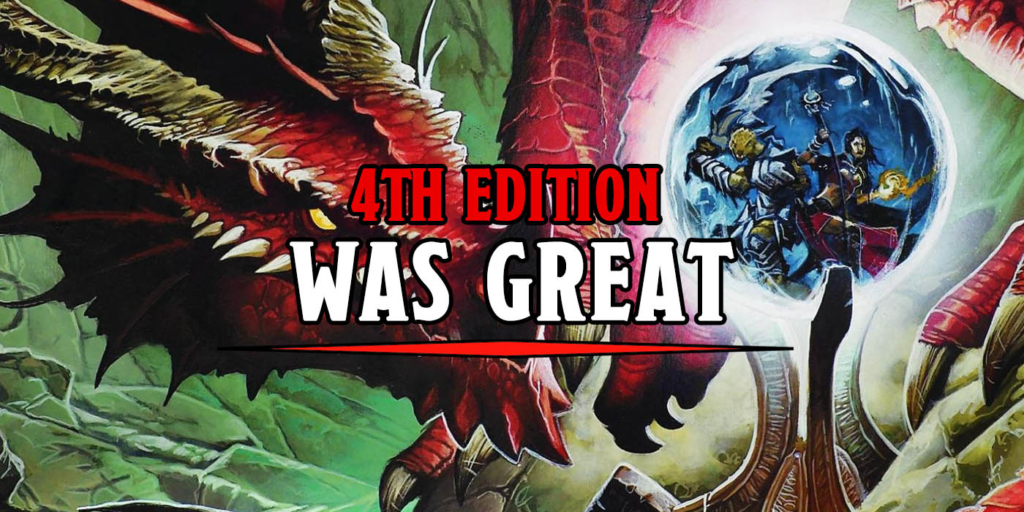D&D: What Happens In Sigil, Stays In Sigil – The City Of Doors
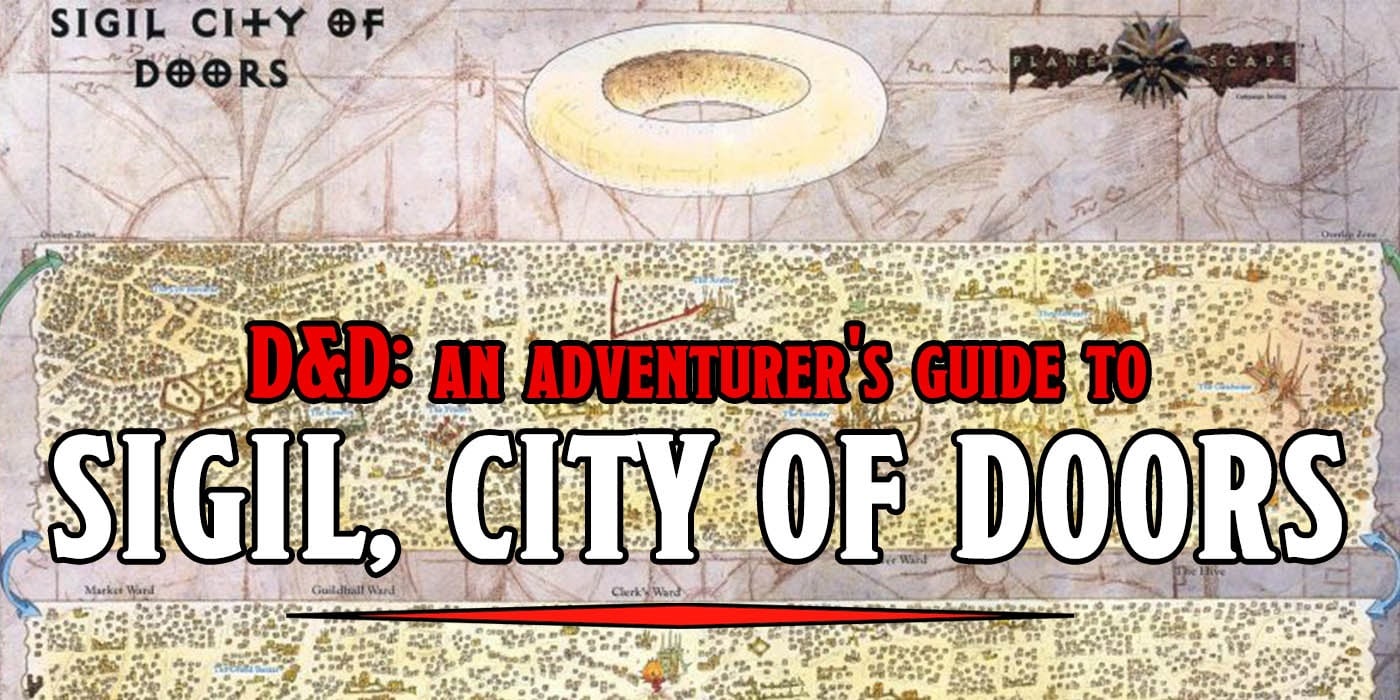
There’s a city that is full of doors to places you can’t even imagine. Welcome to Sigil.
That’s right. It’s time to make sure your trusty chiv is at your side, duck the Hardhead patrol, and pray that the Lady of Pain‘s all-seeing gaze doesn’t fall on you today–we’re visiting none other than Sigil, the City of Doors. Hope you have a key…
Alright, technically we’re talking about Planescape, the award-winning campaign setting written by Dave “Zeb” Cook and published in 1994 by TSR for 2nd Edition AD&D. And technically, Planescape encompasses everything–the setting expands the cosmology of D&D using key concepts from the first edition Dungeon Master’s Guide and the Manual of the Planes and presents them in an environment that low-level characters can survive adventuring in. More importantly, the setting lead to the “Great Wheel” model of the D&D Cosmos, which you’re familiar with if you’ve picked up a Dungeon Master’s Guide in the last decade or so.
The setting was big. It took all the heavens, hells, and other planar confluences and ordered them. It did more than that. It gave them character. Partly of necessity–during the halcyon days of 2nd edition, terms like Devil and Demon were abolished from the books–so in their place you had Baatezu and Tanar’ri and the assorted lore that accompanies them. But through this book, the Nine Hells and the Abyss and all the other pleasant locations that are fun to visit got their stories solidified.
That’s because Planescape is a world unto itself. Zeb Cook was tasked with developing a campaign setting that players could adventure in. Not just a place for high-level characters to visit after their DM has flipped the table for the fourth time in as many weeks and everyone’s wondering if maybe it wouldn’t be better to take a break from the incredibly delicate plot that the players keep ruining (ruining!) with their poor decision-making and incredible luck.
And what a world they built. It captures the feeling of the infinite that you should get when contemplating whole worlds/planes/whatever all mixing together.
You have the Inner Planes, full of elemental power and positive and negative energy, the Outer Planes which are heaven and/or hell among other things–all laid out along an axis (or axle) of alignment, and all manner of other disparate godly realms and minor domains dotting the Concordant Outlands. Also the Ethereal, Astral, and Prime Material Planes are there, but they are less important here.
The Outlands are also home to the gate-towns–settlements built around a permanent portal to one of the Outer Planes. Usually these towns were safe (or at least stable) because they provided a fairly reliable means of entering whichever Outer Plane they were connected to.
So…would there be an Outer…Heaven? I’m asking for a friend.
But towering over everything, resting atop the great spire that is at the center of the multiverse, is Sigil, the City of Doors. And odds are good when you hear Planescape, you’re not thinking of the great wheel, or the blood war between the demons and devils, or even the ever-changing city of Xaos (except you Tzeentch, I know), odds are you’re thinking of Sigil.
And why wouldn’t you be? It’s the city at the center of the universe, the crossroads between all planes–the domain of the Lady of Pain where even gods fear to tread. And that’s just the outside of it. Sigil is unique among all the planes. The entire plane is a city enclosed within a torus. It has no beginning, no end, only the city–and the Lady of Pain, it’s nigh-omnipotent demiurge (possibly–another theory holds that she’s just six giant squirrels with a circlet and a robe of levitation)–but to talk too much about her is to invite unending torment.
Speaking of Torment, let’s talk about the other reason Sigil springs immediately to mind when people think of Planescape. Sigil is one of the main locations (and indeed the setting of the entire first part) of one of the best computer RPGs of all time: Planescape Torment.
If you wondered why the setting is so beloved, here’s why. Planescape Torment is a masterpiece. Set in Sigil (and then across the multiverse) Planescape Torment follows the story of the Nameless One, an immortal being who has lived countless lives and has forgotten them all, even his own name, after he awakens in Sigil.I don’t want to spoil it here–if you have never played the game, you should go play it. Like right now. You can pick it up on GoG where you can download it and then subsequently remind yourself of just how far D&D has evolved since second edition as you try and create a character and relearn a system that you thought buried, long ago.
And you know what, you’ll still play the game. It’s that good. Because the game is Planescape. It captures the heart of the setting–its quirky, not-quite-cynical-but-definitely-world-weary attitude about existence and philosophy. Wandering around you can talk to various NPCs about the nature of reality. You can start a fight with a drunken demon, steal from just about everyone–and really take the reins of how your character develops. It’s quite possibly the best game for playing an evil character, if you want to go that route. It’s amazing for playing good too.
That’s where the game shines. It doesn’t really make any moral conclusions. Playing through, there’s not necessarily a right or wrong answer to the problems the game presents. There might be a solution you feel works best–but that’s all up to you. And that, at its core, is what Planescape (and especially Sigil) is all about. It’s a place where angels and demons coexist (they have to, or the Lady of Pain will deal with them), but it’s got its own sort of cosmopolitan melting pot that isn’t afraid of humor.
And I think for many people, Planescape Torment made Planescape feel alive. I know after I played the game, I suddenly got the way everything worked. I understood the comedy of dealing with the Harmonium, or of the crazy Xaositects–I had a chance to see the world in action. And I had a chance to experience for myself the heart of this particular setting. It’s all about imagination and creativity, as seen through the disaffected “seen-it-all” lens of someone who lives in the crossroads city of the universe.
Back to Sigil. As you can see, the city is divided up into six different wards:
- The Lady’s Ward — where the important things are: courts, prison, etc. All the tools the Lady needs to run her city, even if she doesn’t live here, all the rich people do.
- The Lower Ward — the industrial portion of the city, often full of thick, choking smoke from various furnaces and let’s hope that’s all.
- The Market Ward — pretty much what it says on the tin. You wanna buy something, anything, you can find it here.
- The Guildhall Ward — or get it made here. After all, artisans gotta have a place too.
- The Clerk’s Ward — this is where you go to get your shirt stuffed with red tape. All the bureaucrats and other city officials who can’t afford luxury live here.
- The Hive — the place where most unfortunates end up. If you’ve ever been a dreg of society you’ll be right at home here.
Each of these wards could be a nation unto itself–and indeed, the city might have fallen that way if not for the Factions–groups of people working to keep the trains running, so to speak. For while the Lady of Pain is the absolute ruler of Sigil, she doesn’t much care about it unless you’re doing something to threaten it. The ebb and flow of commerce and the well-being of the city fall into the hands of the fifteen factions (there are fifteen because the Lady decreed there should be fifteen) that scrabble for whatever power or authority they can muster.
Athar
First up you have the Athar, also called the defiers or the lost. The Athar are fed up with the gods–they have seen their pettiness and wars, and become disillusioned by the way they run things. They’ve seen the Planes, and come to believe that the powers (as they call them) are just denizens of another plane, and that doesn’t make them worthy of worship. But for all that, true divinity is something important to the Athar. Like Mulder, they believe the truth is out there, but that, no one has found it yet. Perhaps it lies concealed behind the veil of the world, which they sometimes call the Great Unknown–and is the source of their powers.
Believers in the Source
Next up are the Godsmen. They believe that life is just a crucible in which souls are forged into something greater. Ascension is the path they would tread–after all, for them, any one can eventually become a god. And that eventually even the gods evolve or transcend their nature and become something else. For the godsmen, whose base of operations is at the great foundry of Sigil, the world is constantly forging and reforging itself (and its people) with a sublime apotheosis as its ultimate goal. Something they would try and achieve–even if it means hastening the end of everything to get to it.
Bleak Cabal
Existentialists and nihilists to the core, Bleakers believe that the world has no divinity or higher meaning to it. That the physical is all there is (which gives them a bleak or insane outlook on life). They don’t look for meaning on the outside of life–instead seeking to find it through their own actions.
Doomguard
Echoing the doom and gloom aspects of the Bleakers, the Doomguard believe that entropy and the destruction of everything is inevitable. They don’t see this as something to fear, but rather see it as something beautiful. When the planes decay and are gone, they will take with them imperfection and something perfect will take its place–they do not guard against doom, but rather guard doom from those who would try and stave it off.
Dustmen
The Dead, as they’re called, understand that neither life nor death are any real kind of existence. The whole sodding world is a mockery–and it’s only by shunning things like passion and desire for the pursuit of a True Death that one can escape the cycle of the Planes, where people are born and reborn again and again, never learning. Or so the Dustmen believe,
The Fated
If you believe that Might makes Right and that those who can, should, then this is the faction for you. Takers believe that the world belongs to those who can hold it. And that anyone who can take an advantage in a situation has the right to do so, regardless of how it affects someone else–up to and including forcing them to listen to you go on and on about how Atlas Shrugged and the Fountainhead really tell it like it is. A very pleasant bunch, all in all.
The Fraternity of Order
Here is where all the rules lawyers end up. The guvners believe in the rule of law–inasmuch as there should be laws governing everything (whether physical laws, or manmade) and that the surest way to come out on top is to know which rules can be bent, which can be broken, and which can be wielded like a sword against a horde of encroaching enemies.
The Free League
The Indeps believe that nobody really has any of the right answers. Or maybe everyone does. Either way, organized factions are the problem–they reject that kind of dogmatic thinking. They don’t even identify as a faction, which is why the Indeps don’t have a single leader, nor do they have an official headquarters, though everyone does seem to unofficially just sort of meander down to the Market Square when it’s time for a meeting.
The Harmonium
Ask anyone the secret to the multiverse and you’ll get a thousand different answers. But the real truth of the cosmos is: The Harmonium is Always Right. Especially according to the Harmonium. They know that people want to live in harmony with each other, which is why the Harmonium’s gone to the trouble of defining harmony and making sure that the people who don’t follow it are dealt with. The Hardheads (don’t call them that) are a natural fit for the Sigil’s police force–wouldn’t you agree?
Mercykillers
Justice at any cost is what defines the red death. They believe that the purpose of laws is to see that justice is done–been wronged by your neighbor, hey the law’s here to help you. So long as you don’t break it. And if you do, you deserve whatever is coming your way–don’t expect the red death to be merciful. Mercy is for the weak. And the weak deserve to be punished.
Revolutionary League
Any questions?
Sign of One
If every person is unique–and every plane also, then it stands to reason that each person should be at the center of their own reality. Each multiverse is just a different self, with a given individual at its core. At least, that’s what the signers would have you believe. And maybe they’re right–that’s why people tend to think twice before stabbing them. After all, you wouldn’t want to accidentally shank the source of everything in the universe, would you?
Society of Sensation
Sensates seek sensation, since sensation sits squarely central to any true kind of enlightenment. To Sensates, the world is something to be experienced–it’s the only way you can be sure something is real. Without sensation, something doesn’t exist–so they constantly seek new experiences and sensations, as if to prove to themselves that they do, in fact, exist.
Transcendent Order
Stop trying to live and just live, is the credo of the Ciphers. They believe that everyone is a part of the multiverse (and that the multiverse, in turn, is a part of all things) and if that’s the case, then when you can act and live in tune with the universe without having to think about it, you’ll have achieved enlightenment. It isn’t about acting rashly, but about learning to listen, and honing one’s instincts–that’s what separates Ciphers from just any old berk on the street who didn’t stop to think about what he was doing.
Xaositects
Finally there are the Xaositects. To the Chaosmen, the entire multiverse is sublime chaos and the only way to make any sense of it is to realize that life…uh…life always finds a way.
At any rate, we’ve barely scratched the surface of Planescape and Sigil–if you’re intrigued by any of this, by all means go check them out. This is one of the most inventive and imaginative settings for any RPG. There’s a reason everyone loves it–it’s not afraid to wrap big questions in mundane things (after all, you can get mugged by the Dustmen just as readily as you can get thumped by the Harmonium).
If you want to try something that feels bigger than the usual adventuring fare–and something that necessitates a different kind of story (after all, if you adventure in the planes, or Sigil, you never have to worry about goblin raiders–they’re probably running a business out of Market Square with a license to raid on odd-numbered days) then you should check out Planescape.
Maybe you’re not so bad, cutter. Got a favorite Planescape story, tell us all about it!

